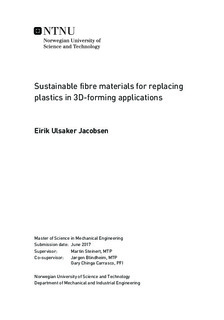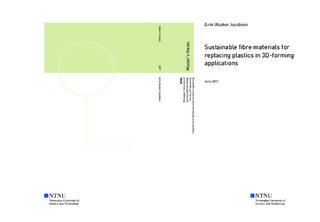| dc.description.abstract | Plastic is a very broad family of materials that may provide a wide array of mechanical properties depending on the plastic or production method in question. This is why many industries have chosen plastic as their material of choice for the production of anything from plastic bags to underground piping. There is, however, a prominent issue concerning the heavy environmental impact of plastic. This is both due to the processing of crude oil and lack of biodegradability which in turn impact nature if the plastic is not processed in a proper waste disposal stream. In some applications such as food trays and food containers, moulded pulp has been used as a sustainable and more environmentally friendly alternative to conventional plastic products for quite some time already. The applications of moulded pulp do however not expand very far at the current time and that is why this thesis seeks to assess the properties of moulded pulp samples to evaluate the potential for replacing plastics in new mass production settings. Moulded pulp does not only have an environmental motivation but it also shows promise of being more economically viable in certain settings and the paper industry is always looking for new applications for them to use the pulp they are manufacturing. There are, of course, many applications where it is not viable or desired to replace plastic at all but the motivation is strong for replacing plastics in applications where it is possible. This is especially due to a general shift in society towards environmental awareness which is a major driving force in changing industries. If people want change, the industry will in most cases have to adapt in order to remain profitable.
For this thesis, the focus was on assessing the mechanical properties of moulded pulp and how the fibres and the material behave when thermoformed in a fashion similar to that of thermoformed plastic. This was primarily done through the means of tensile testing of paper sheets and moulded specimens. In addition to this, the effect of reinforcement from microfibrillated cellulose (MFC) was also explored.
In the end, the results of all the tests were very promising and the strength of the moulded samples was on par with quite a few of the most common plastics used today. The thermoforming, which is one of the most promising methods for moulding paper, also showed its capabilities of producing excellent samples and the future development of thermomoulding processes could result in highly efficient moulding methods down the line. This thesis did not have any specific applications in mind when the research was conducted but when considering the results it is clear that with further research, this material could possibly be used for a wide array of applications and it could possibly be used in a laminate construction to greatly enhance the strength and make the material viable for even structural components. | |

